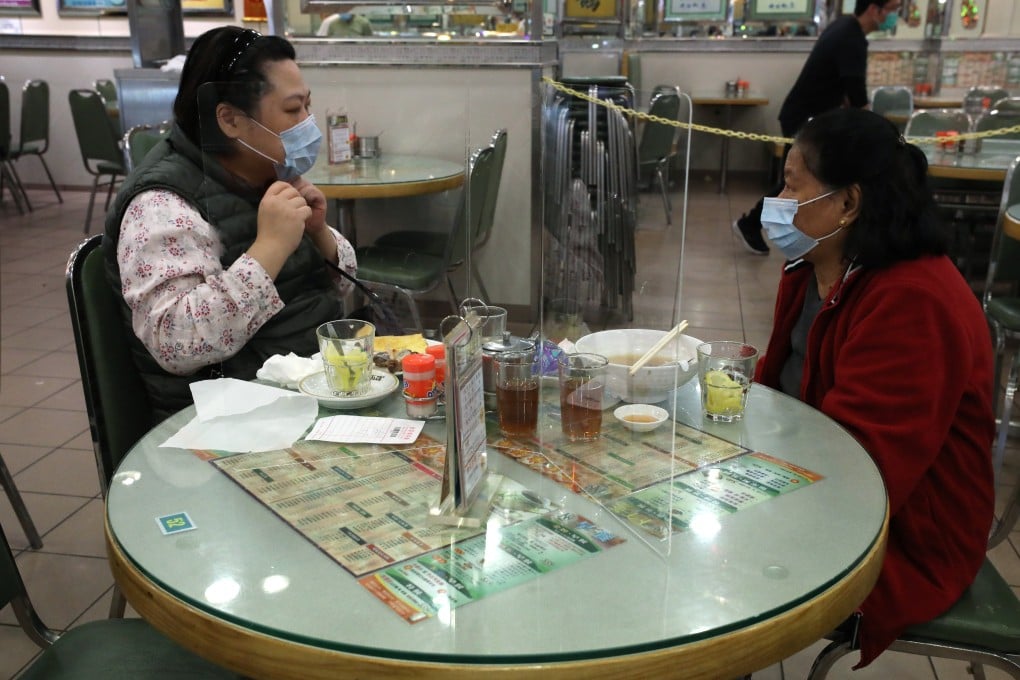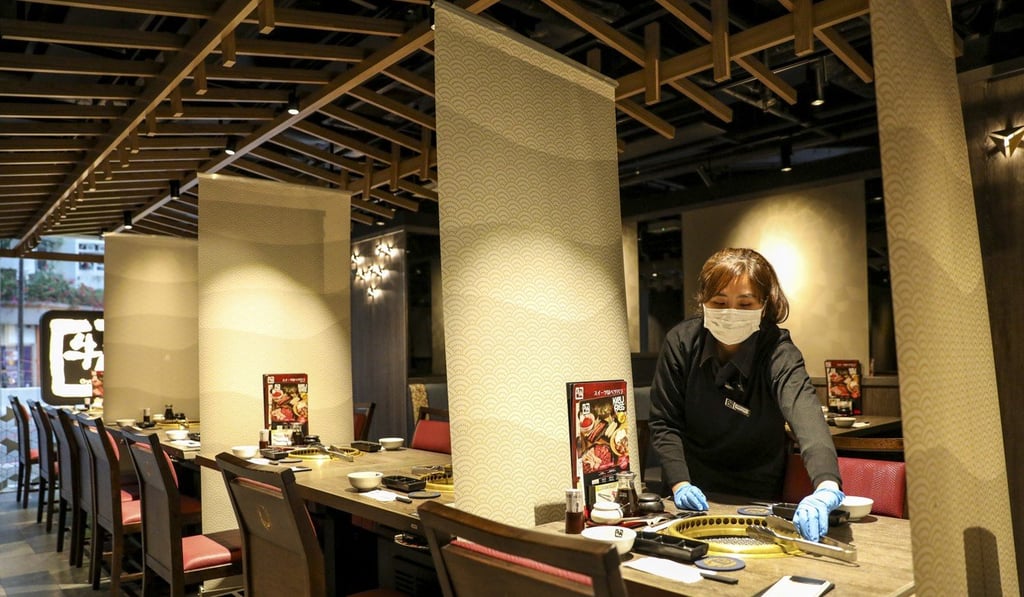Coronavirus: Hong Kong restaurants install physical barriers between diners to allay contagion fears
- Businesses hope setting up partitions will reduce the spread of infection and offer comfort to nervous customers
- An infectious diseases expert advises people not to talk to each other if they have to eat out together

Restaurants in Hong Kong are segregating diners with physical barriers in an attempt to minimise the risk of contagion and boost consumer confidence as the coronavirus outbreak hammers the industry.
Roll-up banners and acrylic panels have been installed between tables – and even between people eating out together – as the number of confirmed cases of the virus in the city continues to rise.
LH Group, one of Hong Kong’s biggest restaurant chains, was racing to install partitions at all of its nearly 40 venues by the end of the week as a temporary preventive measure, its chairman Simon Wong Kit-lung told the Post on Tuesday.

Some local tea houses, or cha chaan teng, and hospital canteens, such as at Baptist Hospital, have made similar arrangements. One cha chaan teng in Tai Kok Tsui set up two-feet-tall transparent panels on each of its 10 or so tables.
“Our focus and priority is fighting against the outbreak,” Wong said. “The roll-up banners will at least offer some comfort to diners.”